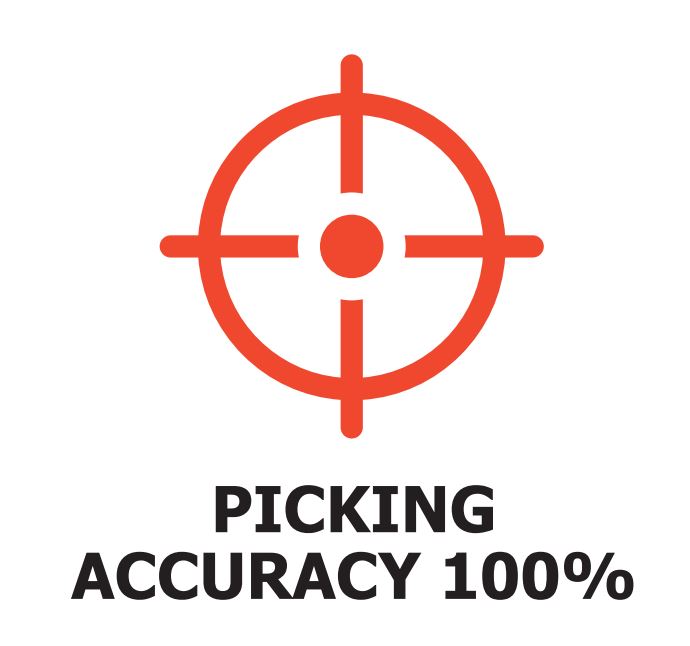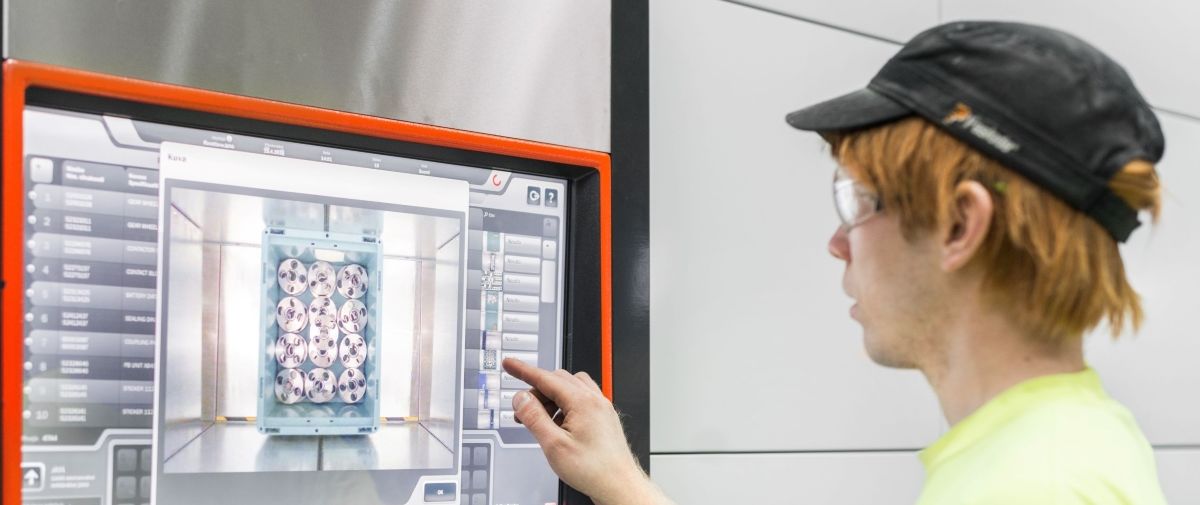In modern manufacturing, one must deal with customers expecting more customized product variants to precisely meet their needs. Therefore, many modern manufacturers have to handle a many-fold increase in the part types required for the product variants.
Let us consider the example of an industrial drill manufacturer who has 10 products with 10 variants of each product (100 product variants). Each product variant has 10 unique parts and 30 parts that are common between all of the different product variants. To manufacture all of the product variants, the manufacturer needs 1000 unique parts and 30 common parts - but the common parts need to have different seals, made of different materials, for the 100 product variants. This industrial drill manufacturer has to handle a rather complex matrix of parts.
There can be a multitude of different shim shapes and sizes that even a trained eye can find difficult to distinguish.
If you are manufacturing a large number of product variants, then you are probably familiar with the scenario presented above. Your warehousing operation might be struggling with a "unique vs. common" part makeup as they feed the production of your product variants. Let's take a simple example, shims. They are relatively small but very important parts of any machine. There can be a multitude of different shim shapes and sizes that even a trained eye can find difficult to distinguish. When we factor in the wide range of materials that shims can be made of, the complexity rises further. Picking the right shims is critical in product manufacturing involving product variants. And that's just shims.
We need part storage and picking to be done in a manner that prevents picking errors.
Most product parts are stored or warehoused at some point before they are used in production. In particular, parts that cannot be labelled separately, such as special bolts, other special small parts, sub-assemblies and so on, must be identified somehow so they are picked correctly for production. When there are thousands or tens of thousands of picks a day, picking errors caused by hurry lead to flawed production and late deliveries in a painful domino effect. We need part storage and picking to be done in a manner that prevents picking errors.
Cost of picking errors
Picking errors are potentially catastrophic in manufacturing because they can unleash an avalanche of margin-eating costs. The most prominent cost is the use of courier services to urgently deliver the right parts to customers that have taken delivery of a product and cannot use it. But that's just the tip of the iceberg. Handling the claim and figuring out what caused the error in production and/or shipment will burden the whole operation. The error or errors must be fixed. If you're lucky, you have enough inventory to send the right parts afterwards. But you have to swallow the added costs of a hurried delivery and breaking the normal part picking flow, costs that could have been avoided. In the worst case, you might not have enough inventory and the cost of the picking error will cascade down the supply chain.
If picking errors are frequent, the customer relationship will suffer, and you might lose revenue to your competition.
Perhaps, one customer got the last, but wrong, part that was needed by the next customer. Then you have two customer claims to take care of. How to avoid the painful “drawing empty”? One way is to keep inventory high, with extra items, which will cost extra. Another way is to make perpetual inventory counting, but it is a painful process and does not make the problem disappear. If picking errors are frequent, the customer relationship will suffer, and you might lose revenue to your competition.
The worst case is when the unavailability is noticed just during production or while getting an order for shipment
In the production environment, if even a single part is not available, the variant cannot be finished. The worst case is when the unavailability is noticed just during production or while getting an order for shipment. Work in progress (WIP) means you have tied your capital in a non-productive way while you could use your inventory to finish another variant where a part is needed. The missing items are not just as annoying as a tool missing when you need it, but also a major cause of delays or disruptions in the manufacturing or distribution processes. In the last case, it causes a loss of time, in the worst case it stops the production or shipment.
In many manufacturing operations, there is silent knowledge of where certain key parts are located and how to identify them. This knowledge can be lost when personnel leave. When replacing them with new personnel, the learning curve to acquire such silent knowledge is slow -- and fragmentary. A strong, easy to learn picking process is essential for successful onboarding.
Picking the right parts
Investing in warehouse software and automation systems is necessary to avoid picking errors. However, it is not straightforward to decide which solutions to bet your money on.
If the person is presented with only one bin, there is no way he could pick the wrong item.
Most warehouse systems don’t address the root cause but try to minimize the probability of errors. In reality, if a person is presented with too many options to act on, they will eventually make a mistake. For example, a shelf with bins of similar items side by side will increase the probability to pick from the wrong bin. If, on the other hand, the person is presented with only one bin, there is no way he could pick the wrong item. Limiting the options would be the best bet for your investment.
Enterprise Resource Planning (ERP) systems have tools for managing part stocks in a forward-looking manner. They are disconnected from the physical world by nature; the connections they have to the physical world are dependent upon defined processes in the overall production flow. They can recognize picking errors, but they cannot detect or prevent them. Certain software systems such as Warehouse Management Systems (WMSs) do understand the internal dynamics of the warehousing process. They can track every Stock Keeping Unit (SKU) location and level. However, they too are disconnected from the physical world. They don't detect it when a person picks apart from the wrong bin or picks the wrong number of parts. All software systems rely on data that is entered into the system by people.
If there would be an automated system that brings the part needed, and only that part, then there would be no picking errors.
In an ideal world, there would be only one part physically presented to the picker. If there would be an automated system that brings the part needed, and only that part, then there would be no picking errors. There could also be a system that guides the picking process, a pick-to-light system for example. Here, a laser or light would point to the parts that need to be picked. This wouldn't be fool-proof, since the parts on a tray or shelf might have been moved in error, or the picker could accidentally pick the wrong part regardless of the light guidance. The benefit of bringing only one part, the right part, to the picker would be to reduce picking errors to zero.
Picking the right amount
Based on unit weight it is easier for a person to make sure the correct amount was taken
Making sure the right part is picked is important, but it's just as important to pick the right number of parts. Weighing parts is a traditional and effective way to accomplish this. The part unit weight is known because it is ascertained when the part container goes into storage: the individual part is weighed, its weight is recorded, and the total weight and number of the parts in the container are recorded.
On a picking mission for the part in question, the picker takes out the parts needed, weighs the container, records its lower weight, and puts it back into storage. In this way, it's possible to keep inventory accurate and avoid the problems caused by missing parts. Other techniques are being developed to accomplish this, involving machine vision and RFID, but they are not practical and accurate enough yet for commercial deployment.

If you're looking for ways to seriously improve picking accuracy in your manufacturing operation, check out the latest in this critical area: https://www.konecranes.com/equipment/agilon
Vesa Hämetvaara
Director, Agilon Business
Konecranes Agilon
email: [email protected]
Teemu Oittinen
Manager, Product Development
Konecranes Agilon
email: [email protected]
